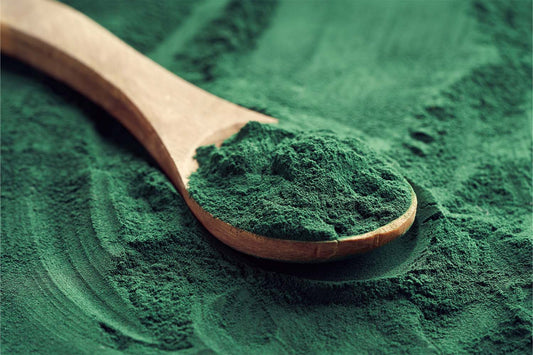Ever finish a bootcamp class or a heavy weightlifting session, feeling like a total champion, only to wake up a couple of days later feeling like you've been hit by a bus? That is what we call delayed onset muscle soreness (DOMS).
DOMS is that post-workout stiffness and achiness that makes you groan every time you move. The intensity of your DOMS can vary depending on several factors, including the type of workout, your fitness level, age, and even your nutritional choices.
In this article, we'll dive into the nitty-gritty of DOMS, shedding light on what it is, why it occurs, and how it relates to your tough workouts. We'll also provide insights on how you can manage and potentially reduce the impact of DOMS on your fitness journey. So, strap in, and let's embark on this exploration together.
What Is DOMS?
Imagine your muscles as a resilient team, bracing themselves against the trials of a challenging workout. In pushing your limits, your muscle fibers can end up with tiny tears, triggering an inflammatory response from your body as it works to repair these micro-injuries.
This flurry of activity in your muscle tissue can result in the discomfort and swelling you experience as DOMS, typically peaking a few days after your workout. Essentially, the harder you push your muscles with unfamiliar or high-intensity exercise, the more likely you are to experience DOMS.
Which Factors Influence the Duration of DOMS?
The duration of DOMS is not a one-size-fits-all situation — it can be as unique as your favorite pair of running shoes. Various factors play a role in determining how long your muscles may feel sore after that epic workout.
Your Current Fitness Level
Your physical fitness level forms one of these factors. Essentially, the fitter you are, the better adapted your body becomes to handling the demands of exercise, potentially resulting in a reduced DOMS duration.
The Intensity of Your Workout
The intensity and type of workout also have their say. High-intensity interval training (HIIT) or heavy weightlifting, especially if you're new to them or returning after a break, can cause longer-lasting DOMS. Eccentric exercises, like running downhill or slow weight lowering, are notorious for inducing this post-workout discomfort.
Who You Are
Let's not forget individual differences. Age, gender, and nutrition can also influence how you experience DOMS. As we age, recovery may take a bit longer. Gender differences exist, but they’re not as significant. Nutritionally speaking, a balanced diet rich in omega-3 can support your body's natural recovery processes.
Your Overall Routine
Ultimately, muscle recovery and adaptation are vital. When you exercise, you're pushing your body to adapt to higher levels of physical stress, leading to stronger, more capable muscles over time. Proper rest, nutrition, and gradually increasing your workout intensity can help manage DOMS.
How Long Does DOMS Usually Last?

So, how long will DOMS last after a hard workout? Typically, you can expect DOMS to start showing up about 24 to 48 hours after your workout, peaking around the 72-hour mark and often subsiding within five to seven days.
However, it's essential to recognize that these are general estimates. The actual duration can vary based on the factors that we talked about earlier. For example, a seasoned marathon runner might feel DOMS for a shorter duration after a long run compared to a newbie hitting the pavement for the first time.
Each of us is also unique in our response to exercise and recovery. Some of us might bounce back more quickly from DOMS, while others might need a bit longer to feel back to their normal selves. In any case, don't forget that experiencing DOMS is a sign that you've challenged your muscles, and they're getting stronger because of it!
Can You Measure DOMS?
DOMS may seem difficult to measure on your own, but there are ways to assess its severity and duration.
There are a few scientific methods for measuring DOMS that involve medical equipment and professional evaluation. For example, researchers often assess muscle tenderness, swelling, or stiffness. However, since we aren't all equipped with a lab at home, self-assessment becomes key.
You can assess DOMS based on your pain level during daily activities and movement. For instance, if you've had a killer leg workout, the pain while climbing stairs can be pretty telling. It's all about paying attention to what your body is saying.
Just remember, DOMS should be a discomfort rather than a distress signal. Be aware of the warning signs that what you're feeling might actually be an injury, not just muscle soreness. If you're experiencing sharp, intense pain, have lost a significant range of motion, or the pain hasn't subsided after a week, you may need to seek professional advice.
It’s important to always listen to your body — it's your best ally in the journey for wellness.
How Can You Minimize DOMS?
While DOMS is a common part of the fitness journey, that doesn't mean you're stuck with severe soreness after every workout. Let's explore some strategies to minimize and manage DOMS.
Kick things off with a proper warm-up and cool-down. This process gradually increases and decreases your heart rate, prepping your body for the workout and aiding recovery afterwards.
Don't forget the power of hydration and nutrition. Water supports overall bodily functions, including recovery. Additionally, a balanced diet, potentially supplemented with iwi life's plant-based omega-3, could help support overall healthy muscle recovery. Remember, it's all about giving your body the building blocks it needs to properly rebuild and repair itself.
Invest time in recovery techniques like foam rolling, massage, and active recovery, which can help to relieve muscle tension and boost blood circulation.
Last but certainly not least, get enough sleep. Restful slumber is crucial for your body to get to work repairing and strengthening your muscles.
Incorporating these strategies into your fitness journey can help you to feel better, faster, after that hard workout. After all, every step of the journey should be enjoyable, right?
Myths and Misconceptions About DOMS
Let's take some time to address some of the common myths and misconceptions that often muddy the waters.
One of the most prevalent fitness phrases you've probably heard is "No pain, no gain." Well, let's clarify this. Pain and discomfort during a workout might signify pushing boundaries and improving strength. However, extreme post-workout pain doesn't necessarily mean you've had a better workout — it might just indicate that you've overdone it, and now your muscles are really paying the price.
Now, let's address another popular myth: lactic acid. Lactic acid is often blamed for the muscle soreness you experience after a workout. But guess what? It's not the culprit for DOMS.
While lactic acid does build up in your muscles during strenuous exercise, your body clears it out within a few hours of your workout, long before DOMS kicks in. So, no, lactic acid is not lounging around in your muscles causing mischief for days.
Understanding these myths can help adjust your workout expectations and strategies, making your fitness journey smoother and more enjoyable.
Conclusion

DOMS is a complex process influenced by many factors. From your fitness level and workout intensity to your age and nutrition, plenty of different factors play a role in how long DOMS lasts after a hard workout.
Understanding what DOMS is and what influences its duration can help you navigate this part of your fitness journey more effectively. Just remember, while DOMS can be uncomfortable, it's also a sign that your body is adapting and becoming stronger. So, while it's important to minimize discomfort, don't be too discouraged if you're feeling a bit sore after your workouts.
Take care of yourself during this process. Proper warm-up, cool-down, hydration, and nutrition play key roles in managing DOMS. iwi life's plant-based omega-3 supplements can be a helpful addition to your nutrition regime. Exercise patience and allow your body the time it needs to recover and adapt. Fitness is a journey, not a race. Your muscles will thank you, and remember that iwi life is here to support you along the way.
Check out our omega-3 products to see how they can fit into your journey to wellness.
Sources:
Delayed Onset Muscle Soreness (DOMS) | ACSM
How Microtears Help You to Build Muscle Mass | University Hospitals
The Application of DOMS Mechanism and Prevention in Physical Education and Training | PMC
Researchers Quantify Muscle Soreness | ScienceDaily
Exercise 101: Don't Skip The Warm-Up or Cool-Down | Harvard Health
Foam Rolling for Delayed-Onset Muscle Soreness and Recovery of Dynamic Performance Measures | NIH
Sleep and Muscle Recovery | NCBI Bookshelf



















